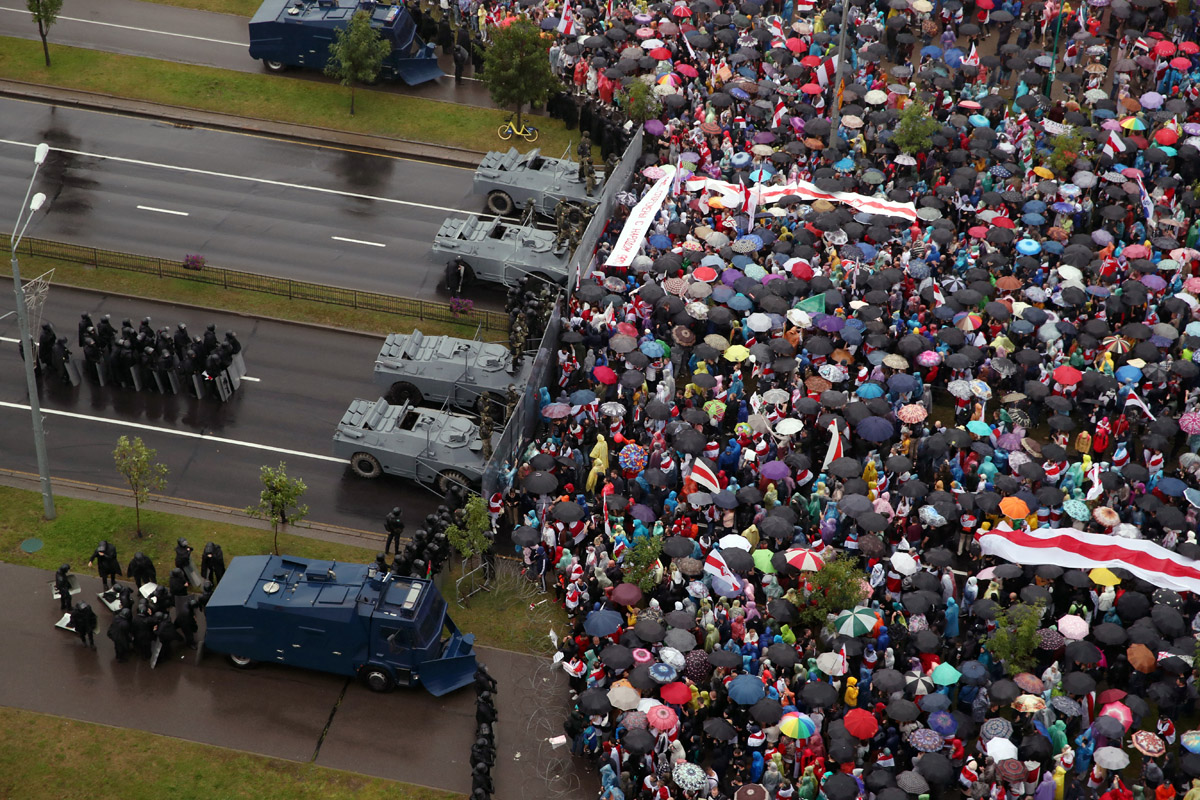Protests in Belarus have been persisting, despite strong pressure from national authorities and an unwillingness from Lukashenko to step down as the re-elected president. Belarus is on fire, much as Ukraine had been during the Winter of 2013-2014. Many recall the images of protestors standing on the barricades, deterring the sight of snipers hovering on the roofs surrounding the Independence Square in central Kyiv by setting car tires on fire. Some Ukrainians even look at Belarus with pride and see a little brother joining the protest against the perpetual pressure from a remnant of the Russian Empire. Maybe, at last, the geopolitical band of influence around Russia will be broken?
Enjoying the status of “the last dictatorship of Europe” had perpetually kept Belarus lagging behind the rest of the Western world. Yet in recent years, Lukashenko had managed to better relations with the EU and other Western countries. Seemingly leading his country out of self-inflicted isolation, Lukashenko and his representatives had conducted several official state visits to European countries. Though not enough to call it a fruitful friendship with the West, it was enough to keep a certain strained peace with Belarus’ European neighbors and not have them enquire too much about the country’s internal (human rights and democratic) situation.
However, Lukashenko’s recent acts of violence against the peaceful protestors in his country have left him even more alienated than he already was. The EU has condemned his actions and voiced that it will not recognize the result’s elections. Even if Lukashenko manages to hold on to his presidency for another term, he (and Belarus) will be reduced to a pariah on an international level. While the world’s eyes are focused on the country’s internal developments and the Western media has painted a picture of a country struggling for democracy, a certain conviction has seemed to have taken a hold of the world, that Belarus will be thriving as a renewed democracy within this and five years’ time.
Chances are, however, that even though the protests in Belarus might shake its internal regime – for a while, at least – they probably won’t break it. The two main arguments to suggest a less than exciting outcome for these protests are heavily interconnected: firstly, protestors are lacking a joint and clear geopolitical motive. They’re protesting against something, without any suggestions on what the alternative should be. If the only uniting factor is animosity against the current regime, the protests have no sustainability, nor a reasonable chance at success. This leads to the second argument: this lack of a joint motive is translated into the absence of an alternative political spill figure, to embody the desire political changes. The difficult part isn’t necessarily dethroning the current dictator, but to come up with a political player who will successfully manage to replace him in the hour of victory.
It’s safe to say that, unless something changes, the current – albeit shaky – regime will remain in place. If anything, the protests and internal unrest have pushed Lukashenko back into the (welcoming or punishing?) arms of Putin, hoping to receive international support for his presidency in exchange for unwavering loyalty. Overthrowing Lukashenko and his cronies will demand more unambiguity and political purposefulness within the protestors themselves. Belarus might be on fire, but it is doubtful whether it will be left with anything more than ash and a make-believe democracy.





